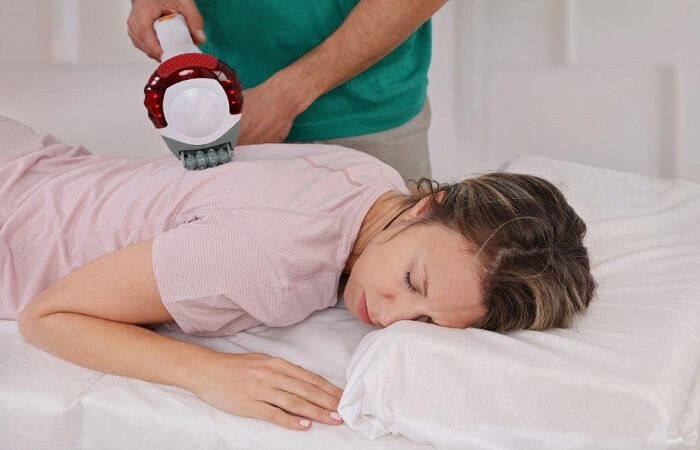Solving Chronic Pain Isn't Easy
As part of Poison Prevention Week, NSC Physicians Bureau member explores the role of opioids in treating chronic pain.
As part of Poison Prevention Week, NSC Physicians Bureau member explores the role of opioids in treating chronic pain.

There are countless stories of people experiencing chronic pain, either because of an injury at work, a bad fall, a car crash, medical condition or, at times, an unknown reason. In fact, more than 20% of Americans experience chronic pain. Pain is supposed to protect the body from additional injury. But persistent, chronic pain can be debilitating.
Hannah was just 19 years old when she experienced a slip and fall on ice outside her school. The fall was bad enough that Hannah broke her back, crushing several vertebrae. Before she came to see me, as many patients in this condition, Hannah was prescribed opioids to relieve pain.
For many years, opioids were often the first line of defense. American doctors used to receive little to no education about how to treat pain most effectively. However, research and experience has taught us that chronic pain is complex, and treating it needs to be as well.
Chronic pain is a debilitating health condition that can quickly erode a person’s quality of life and ability to function day to day. In some cases, opioids are the most effective option. But for most people, alternative treatment options are more appropriate than opioids and carry far fewer risks.
In Hannah’s case, prescription opioids helped for a few days, but then the pain came back. She struggled to sleep more than three hours a night. School became just about impossible. Her mother said that there were many normal things she was afraid to do because any unexpected jolt or the vibration on the floor would cause her pain. For a year and a half Hannah and her family struggled to find a long-term solution.
"We have a new understanding for people who do get addicted because when you are in that amount of pain and it’s chronic, you feel so helpless," said Hannah’s mother, Brenda.
As we know now, opioids have led to drug overdoses becoming the number one cause of preventable death in the United States. More than 47,000 people died in 2017 from opioid related overdose, and 90% are unintentional. Even in non-fatal cases, the body gets used to opioids. Addiction is a real risk. Many users experience other side effects, such as drowsiness, gastrointestinal issues and even organ failure.
Hannah could have easily become another statistic, but she was one of the lucky ones.
In her case, the answer was spinal cord stimulation, one of a handful of alternative modalities that have shown promise in addressing chronic pain. Today there are many options patients have in addition to medication, including non-drug therapies, psychological and interventional techniques.
The World Health Organization (WHO) ladder is a very good algorithm for treating chronic pain. It recommends starting with less invasive modalities and ends with more invasive modalities at the top. The first step includes physical therapy, acupuncture, healthy nutrition, massage therapy and more. Sometimes this is enough to treat chronic pain without the need for additional medication or interventions. People are most successful when their support system understands the benefit of such therapies and helps them adhere to the treatment plan.
The second step includes non-opioid medications, including over-the-counter pain relievers and anti-seizure medications. Some non-opioid medications are specifically FDA approved for treating certain chronic pain conditions.
Low-dose and then higher dose opioids or more invasive interventions follow. For chronic pain, opioids can be part of the equation, but they are often not recommended for long-term pain management.
It is very important that patients learn about treatment options so they can bring their own ideas to discuss with their health care providers. This will ensure pain management is implemented in an algorithm that will provide the appropriate treatment. Sometimes exceptions will be needed to tailor the treatment plan to the patient’s situation and condition. If the prescriber and patient determine that opioids are the best pain treatment option, the patient should understand the potential risks, including the potential for addiction, impairment and accidental overdose.
I’m happy to say that with appropriate treatment, Hannah has gained her life back and is living almost completely drug free. At the end of the day, it’s about helping people lead a good life and not letting pain win.
With a century-long legacy, the National Safety Council is a global center for safety expertise. Let's work together to align resources. We look forward to learning about ways we can join efforts to expand safety everywhere!
There are no items in your cart